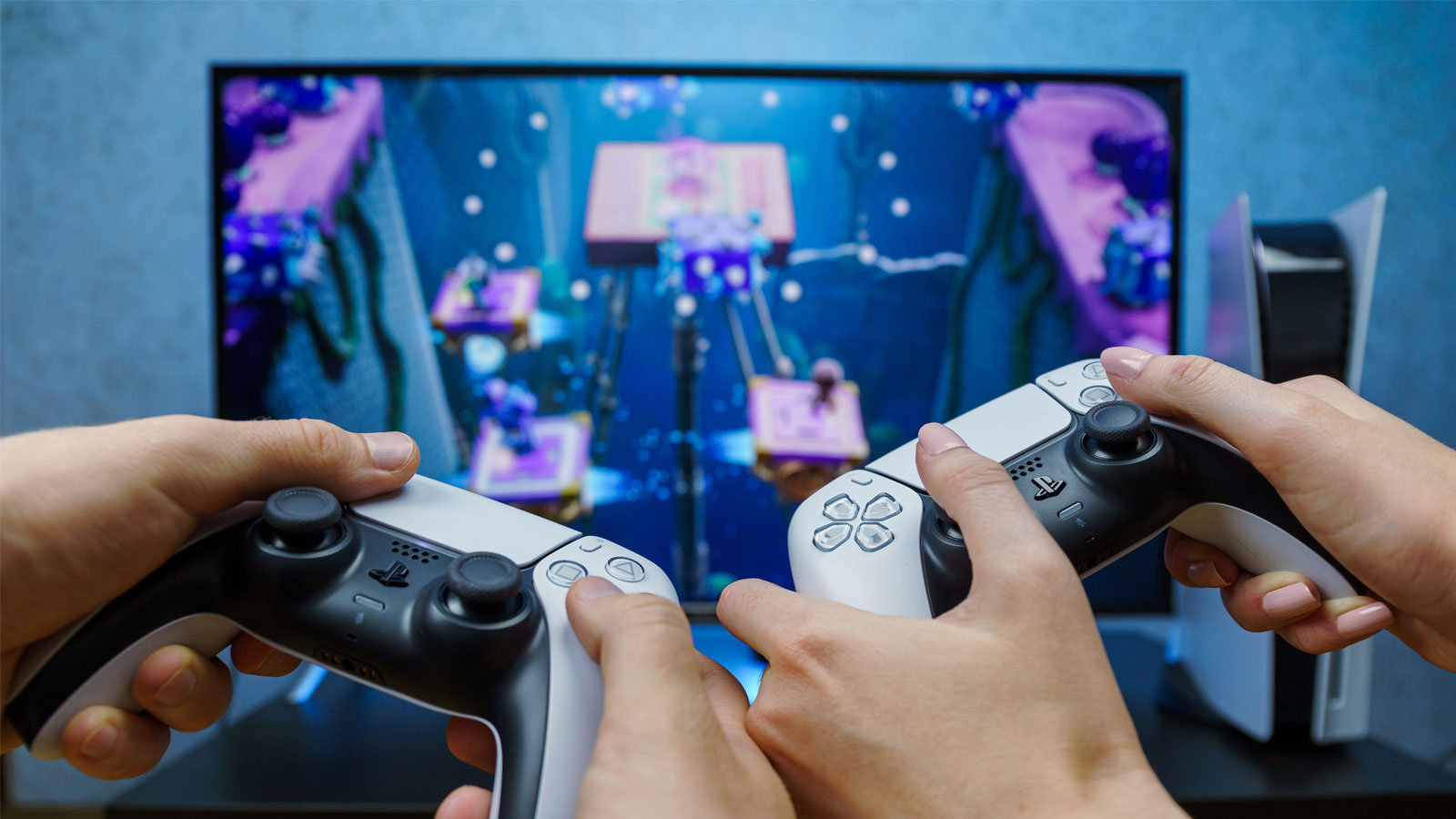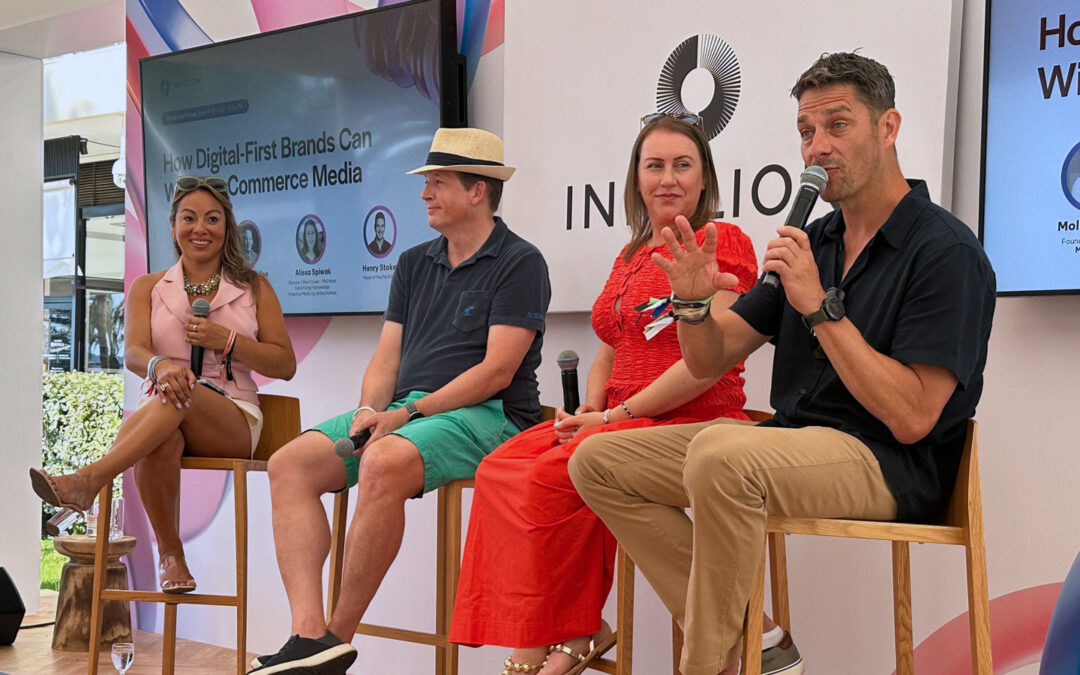The Hidden Connections Between Sports and Video Games

In the 1980s, the video game industry – particularly Nintendo – was just getting started on what would become an estimated $242 billion dollar business.
But before video games hit a point of global appeal and massive profit it was considered a fringe part of culture. In the 1980s and 1990s, confessing to enjoying Super Mario Bros. would get you labeled a dork, a loser, or – the most nuclear of insults – “No-Friend-O.” Sports, meanwhile, were what the cool kids were into (whether watching them or playing them). In essence, it was the classic Jocks v. Nerds scenario – a veritable war of Hatfields and McCoys that has existed in pop culture for decades.
But somewhere in time, the lines blended. Sports writer Bob Cook has recounted that as early as 2010, a kid-friendly baseball-themed video game helped his son learn the rules of the game – the same year that a study found that 38 percent of under-21 males who played video games played games that featured a sport they played in real life. Indeed, before Cook’s son competed in high school basketball a few years later, he had been playing the NBA 2K video game. And these hybrid gamer-sports fan kids are now the rising generation of consumers. They see very little differentiation between sports and video games as forms of entertainment and recreation. And given that the rapt attention paid to sports viewing has historically been an advertiser’s dream, it’s time for the ad industry to catch up and understand this new dynamic.
How Video Game Fans Fell For Sports
For many, video games are a source of enjoyment because they offer a power fantasy. Mistakes are forgiven in perpetuity. Messaging is encouraging. And with enough dedication – the heroes always win.
More than the power fantasy, there’s also a system of motivation hiding just behind the curtains of every game. These motivators, according to Gamification expert Gabe Zichermann, are as follows:
- Status i.e. public/social recognition
- Access i.e. reaching exclusive areas
- Power i.e. increased ability
- Stuff i.e. tangible rewards
In the 1980s, beating Mario gave you social cache (with the nerds, not the jocks, of course). You could brag that you actually beat Bowser. This was, in 1980s recess parlance, like returning with the hunting party with a big kill that could feed the entire village.
And meanwhile, within the game itself, the player is encouraged to take actions that make their character more powerful. When Mario gets a star, he becomes invincible. When he gets a flower, he can shoot fireballs. Players, therefore, learn to seek these things out.
These mechanics were, and are, identical in sports video games.
Think about it. Game players are motivated to take action to put them in a better position to win the game.
In the context of Mario, this means seeking out stars and flowers.
In the case of 1989’s Tecmo Bowl, the first console game to feature real-life NFL players, it meant selecting the LA Raiders. Their running back, Bo Jackson, was so dominant that he has his own section on Wikipedia. The mechanism here remains the same – the player takes an action to put her at an advantage to win.
Jackson isn’t the only dominant video game athlete. In fact, there are countless barroom debates on the topic. Michael Vick in Madden 2004, Sergei Federov in NHL ‘95, “Lefty” in Baseball Stars – the list goes on. In fact, the question of video game athlete dominance has been a decades-long conversation.
And from there, it’s a very easy step into real sports fandom. For instance, thanks to Jeremy Roenick’s domination on the overpowered 1994 video game Chicago Blackhawks, I was a huge Blackhawks fan for a time, despite being born and raised around 1,000 miles from Chicago.
The point is that the satisfying power fantasy for gamers translated very easily into sports video games… and then to sports fandom.
(And that’s without considering the rise of fantasy sports, which have far more in common with role playing games than anyone wants to admit.)
How Athletes Fell For Video Games
We’ve established that the mechanisms that draw video game fans to video games (power fantasies, Status/Access/Power/Stuff) also work for sports video games, thereby creating a short funnel to fandom. Now let’s consider the opposite and view things from the eyes of a pro athlete. Consider this scenario:
A team has a clear objective. Working together, they complement each other’s strengths and capabilities. In a fast-paced contest, they do their best. Maybe they win, maybe they lose – but they’ve played, bonded, tasted some adrenaline, and had a complete experience.
Now – does the above paragraph refer to a real, live basketball game? Or a Call of Duty match?
The theory here is that once again the mechanisms are the same. Fast-paced, team-based contests with clear winners and losers and clear paths and practices for improvement.
An interesting correlation here is looking at what athletes are associated with what games and you’ll start to see this trend play out. For instance:
- Fortnite features LeBron James, Naomi Osaka, Patrick Mahomes, and Neymar Jr.
- You can play Call of Duty as Kevin Durant, Lionel Messi, and (again) Neymar Jr.
- NBA star Gordan Hayward was signed by accessories brand HyperX and has his own eSports merch.
- Four-time NBA all-star Karl Anthony Towns was a creator for Lumosity Games
- And NBA star Devin Booker was involved in Call of Duty’s 20th anniversary.
This doesn’t account for the sports titles that these athletes play – some of which include motion capture and actual dialog from the athletes themselves.
For many of these folks, “athlete” is their day job and, like many – video games are how they spend their downtime.
What Advertising Gets Wrong About These Audiences
Earlier, I mentioned that the 80s were a war zone for social acceptance. Every new piece of content demanded analysis – was it rad, or bogus? – and adoption of the appropriate audiences. The nerds got Mario. The jocks got Michael Jordan. Ne’er would the two meet.
Over the years, however, the audiences blended more homogeneously than anyone expected. But it was often too slow to properly notice. Now, the line between “sports fan” and “video game fan” is largely non-existent. Sports leagues and broadcasts have largely clued into this, from the MLB making games faster-paced for younger audiences that grew up on video games and social media, to the impending debut of TGL’s “arena golf,” which aims to give a famously sleepy sport the thrill of a game of Final Fantasy.
Consider the following:
- Sports media is a great place to reach gaming fans, and vice versa. Not long ago, advertisers never would’ve thought to turn to a sports stadium to advertise a new video game – but it turns out they make for a great captive audience. Netflix enlisted Infillion to bring its serial take on the classic Sonic the Hedgehog video game franchise to an unusual canvas: NHL arenas. The ad was a hit, taking home Creative Media Awards and ThinkLA IDEA Awards honors in out-of-home categories.
- If you’re targeting gamers but not sports fans, or sports fans but not gamers, you’re potentially missing your customers. Ad targeting often still treats sports fans and gamers as distinct, and campaigns typically target one or the other without regard to the hybrid nature of fans today. And that means a lot of missed opportunities.
- Everyone likes to get a little competitive – and that’s a great creative strategy. Infillion’s Creative Studio is accustomed to helping brands dream up ways to make their ad creative interactive, and one of our favorite ways to do this is by turning ads into games. Yes, that’s right: even phone carriers and banks can tap into that desire for a “power fantasy” that captivates both sports fans and gamers.
What Can We Do About It?
As our recent research report explains, the idea of a sports fan is changing. And the answers to a lot of advertisers’ questions and challenges is often to check our assumptions about audiences at the door. Are the labels we’re using old, traditional means of segmenting? Is our creative going to engage the right audience?
In the case of video games and sports, that Venn diagram overlaps way more than you’d think. Meaning that you can rest easy knowing that fans of both basketball and Bubble Bobble are often one and the same.
Want the latest insights on sports audiences? Download Infillion’s “The New Sports Fan” today.
Subscribe to our blog:
Related Posts:

The Consumer-First Approach To Commerce Media Network Success
Your airline is an ad platform now – and so is your bank. Commerce media networks are one of the most interesting areas of growth in advertising, and at Cannes Lions, plenty of them were onsite to talk about it. That’s a conversation that we explored at the Infillion...

Why Neurodiversity Will Lead The Way In The AI Era
One in five employees today identifies as neurodivergent – as having autism, ADHD, dyslexia, or other cognitive variations – and that’s only going to grow. According to research from ZenBusiness, fully half of Gen-Z identifies with neurodivergence on some level....

How Brands Can Win In Times Of Uncertainty
The 2020s have been defined by relentless uncertainty across every industry. For brands and advertisers, it’s been one curveball after another - with the pandemic, AI, and inflation rapidly altering consumer behavior and shifting goal posts. As 2025 reaches its...
Let's Connect

